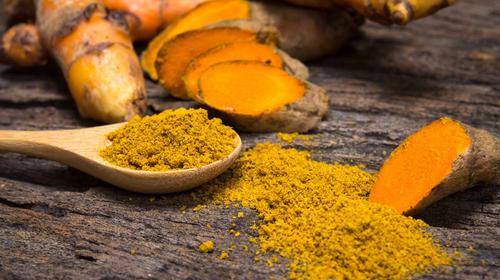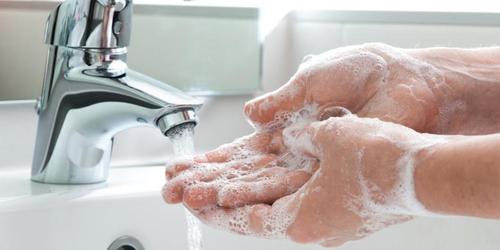How to Treat a Boil - Best Home Remedies
A boil is a skin infection that appears as a red, hard, and painful bump. Within a period of four to seven days, the bump gets more painful and is filled with pus until drained through squeezing. Boils are caused by bacteria called Staphylococcus aureus. They affect mostly buttocks, armpits, faces, necks, and shoulders. These bacteria get into the skin through skin breaks and hair openings. After reaching oil glands and hair follicles, these bacteria are fought by white blood cells that later form pus. There are two types of boils: furuncle appears on the hair follicles with two or more openings and carbuncle appears as hardened large bumps on more than one hair follicle. Boil infection is skin contagious. Some of the additional symptoms of boils are fever and chillness.
Best Home Remedies to Get Rid of Boils
Apart from boils being contagious, one can get rid of them. Below are details on how to treat a boil at home without the use of over-the-counter drugs.

-
Tea tree oil: Tea tree oil contains a compound called terpenes which is responsible for its antifungal, antiseptic, and antibacterial properties. Tea tree oil helps relieve the pain caused by boils. All you need to do is pour a few drops in a bowl and then mix it with coconut or olive oil. You can use five drops of tea tree oil and one spoon of the other oil. Apply this mixture to the boil, and continue to do this regularly until you see a positive result.
-
Turmeric: Turmeric has antibacterial and antifungal effects and can be used to heal boils in two ways. It can be ingested by boiling a spoon of it in milk and drinking, or alternatively, mix the powder with water or ginger to make a paste, and apply it to the boil-affected area.
-
Neem: Neem, also known as the Indian lilac, contains antimicrobial, antibacterial and antiseptic properties which are good for skin infection treating; a boil included. There are three options on how neem can be used. First of all, you can grind the leaves and apply the paste on the boil. Secondly, neem leaves can be boiled in water, which is then drunk. Boil the leaves in four cups of water and keep it on the boil until the water partially evaporates, until about a third remains. This allows the neem content to dissolve in water to make an effective drinking infusion. Thirdly, neem oil can be applied topically on the boil, but you need to dilute it using coconut oil.
-
Warm compress: Warm water helps in softening the skin to accelerate boil bursting. On healing, warm water helps to increase blood flow to the affected region. This brings white blood cells to the affected area, thus speeding up the healing process. To apply warm compress, you should soak a cloth in warm water and then place the cloth on the boil for about ten minutes.
-
Antibiotic ointment: When concerned about how to treat a boil, over-the-counter antibiotics are very effective. Some ointments are very effective in relieving and soothing pain. All you need to do is apply them three times a day until the boil is gone.

Best Tips to Prevent Boils
Both treatment and prevention are important. You can try the following tips to prevent boils.
-
Wash your hands frequently: Hands are the most movable organs of a human being. If the hands are infected either by touching an infected person or having touched an infected area, the bacteria can spread to other parts of the body easily. Hands should be thoroughly washed by scrubbing them, using a lot of water, and later drying them well using a dry towel.
-
Keep skin and hair clean: Human skin is exposed to millions of bacteria daily which are carried in the air and on things the skin touches. In the same way, Staphylococcus aureus is everywhere. You'd better take a shower or bath at least once a day. Areas prone to boils like armpits, buttocks, neck, face, and shoulders should be washed thoroughly. It is especially important to wash skin and hair after sweating. This is the best advice on how to get rid of boils.
-
Keep clothes and bedding clean: It is not advisable to re-wear clothes without washing, because they might have picked up bacteria on the previous wearing. Use gloves when hand-washing clothes in detergents and bleaches.
-
Avoid sharing of personal items: Razors, towels, sports gear, soap, and bathing towels should not be shared. Pus from an infected person can remain on those items and is very infectious.
-
Treating wounds properly: When cleaning a wound, make sure you let cool water run over that part for a while to help flush bacteria or use some saline. Then use antiseptics to remove all the dirt to avoid infection.
In conclusion, staphylococcus is almost everywhere. They can be spread and can go anywhere at any time. Personal care is the only way to maintain a boil-free life. Ensure you follow the above guidelines but most importantly, get a professional opinion or advice from a doctor.
YOU MAY LIKE
-
Best Tips to Get Rid of Milia
-
Top 9 Proven Ways to Get Rid of Head Lice
-
Key Causes and Best Remedies for Itchy Bum Hole
-
Coconut Oil: A Cure for Yeast Infections
-
Wondering How Long Does Sunburn Last?
-
Brown and White Crusty Spots on Skin: Top Causes and Treatments
-
Yeast Infection: How Long Can It Last?
-
Bumps on Your Vaginal Area After Shaving
-
Best Tips to Remove and Prevent Burn Scars on Skin
-
Stages of Herpes and Top Treatment Methods
